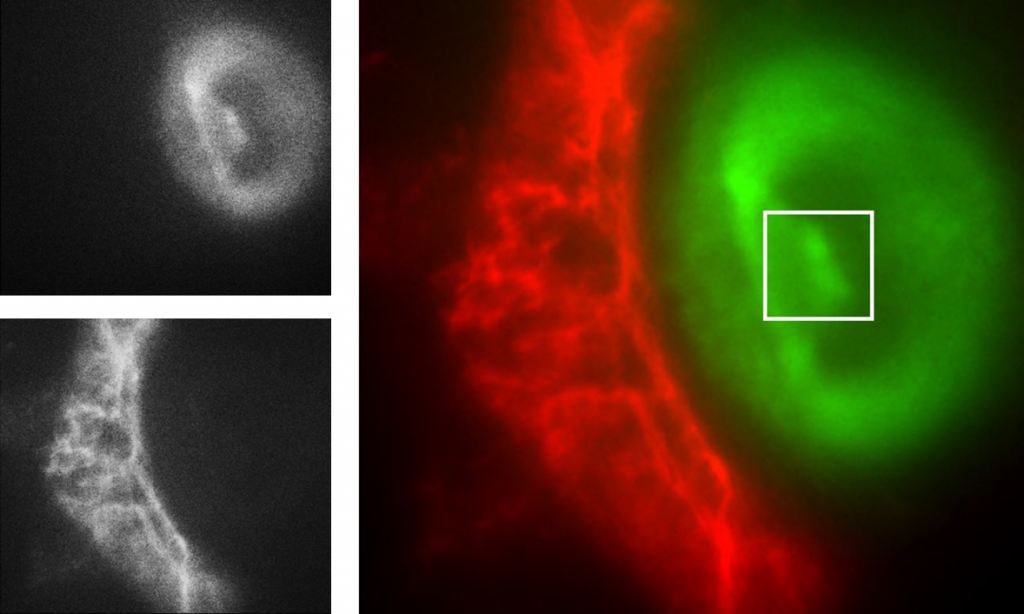Dr. Davide Raccuglia
Institute of Neurophysiology, Charité University Berlin, Germany
Background
Dr. Davide Raccuglia and his team use the model organism Drosophila melanogaster (colloquially known as fruit fly) to study how the brain regulates sleep. Dr. Raccuglia told us more about his research, “What I’m particularly interested in is the functional neural architecture of sensory gates for sleep regulation. We investigate how neural networks interact to create a gate that suppresses sensory processing allowing us to fall and stay asleep. Of course, we also want to understand how sensory information can break such a gate in order to awaken and enable us to react.”
“A great advantage to using Drosophila is that we can target specific neural networks, down to the level of a couple of neurons. We express genetically encoded voltage indicators (GEVIs) in these networks to optically derive the membrane potential of these structures. Using voltage indicators of different colors, we can record simultaneously from different neural networks to study how these networks interact when the flies are tired or rested.”


Challenge
Voltage imaging is a challenging technique due to the imaging speeds required, as Dr. Raccuglia mentioned, “For neural signaling that we consider slow, we record at 100 Hz. However, we also look into single neuron activity and want to resolve spikes during bursts, which requires recording speeds between 1-2 kHz. So, we need a camera that performs well at high-frequency rates, and is also very light sensitive.”
When imaging at high speeds the camera exposure time is limited, meaning that only very light-sensitive cameras can collect enough signal for each frame, making voltage imaging a combination of speed and sensitivity.
Dr. Raccuglia also images neural activity across different scales, “We measure, for example, the entirety of presynaptic terminals of a neural network, and this compound signal would be comparable to a network-specific local field potential. However, to determine the contribution of single cells we use GEVIs to perform multi-cellular optical electrophysiology.”
This requires a camera with a large field of view and small pixels, in order to be flexible enough to image across large samples and to focus on the single-cell level.
The Kinetix22 is a clear development and improvement on my previous camera solutions, especially for high framerate voltage imaging.
Solution
The Kinetix22 sCMOS camera is a revolution in the field of voltage imaging, due to the combination of extreme imaging speeds, high sensitivity, and a large 22 mm field of view. Dr. Raccuglia explains his experience with the Kinetix22, “The Kinetix22 is exactly what I needed for imaging signaling at high-frequency rates. We mostly use the Kinetix22 in Speed Mode, but we can also achieve 100 Hz in Sensitivity mode which is very useful. We use different modes, either selecting more speed or more sensitivity which is advantageous when combining voltage imaging and optogenetics as they require different frame rates and light conditions. The Kinetix22 is a clear development and improvement on my previous EMCCD devices, especially for high framerate voltage imaging.”
“Another advantage of the Kinetix22 is the smaller pixel size, which improves the resolution, and allows me to increase signal strength by binning the pixel.”
“We found the hardware very simple to install, it’s basically plug and play. We’ve used the camera every day and have not encountered any hardware issues. I especially love how easy it is to crop the sensor in Micro-Manager, and the region can be placed anywhere.”

